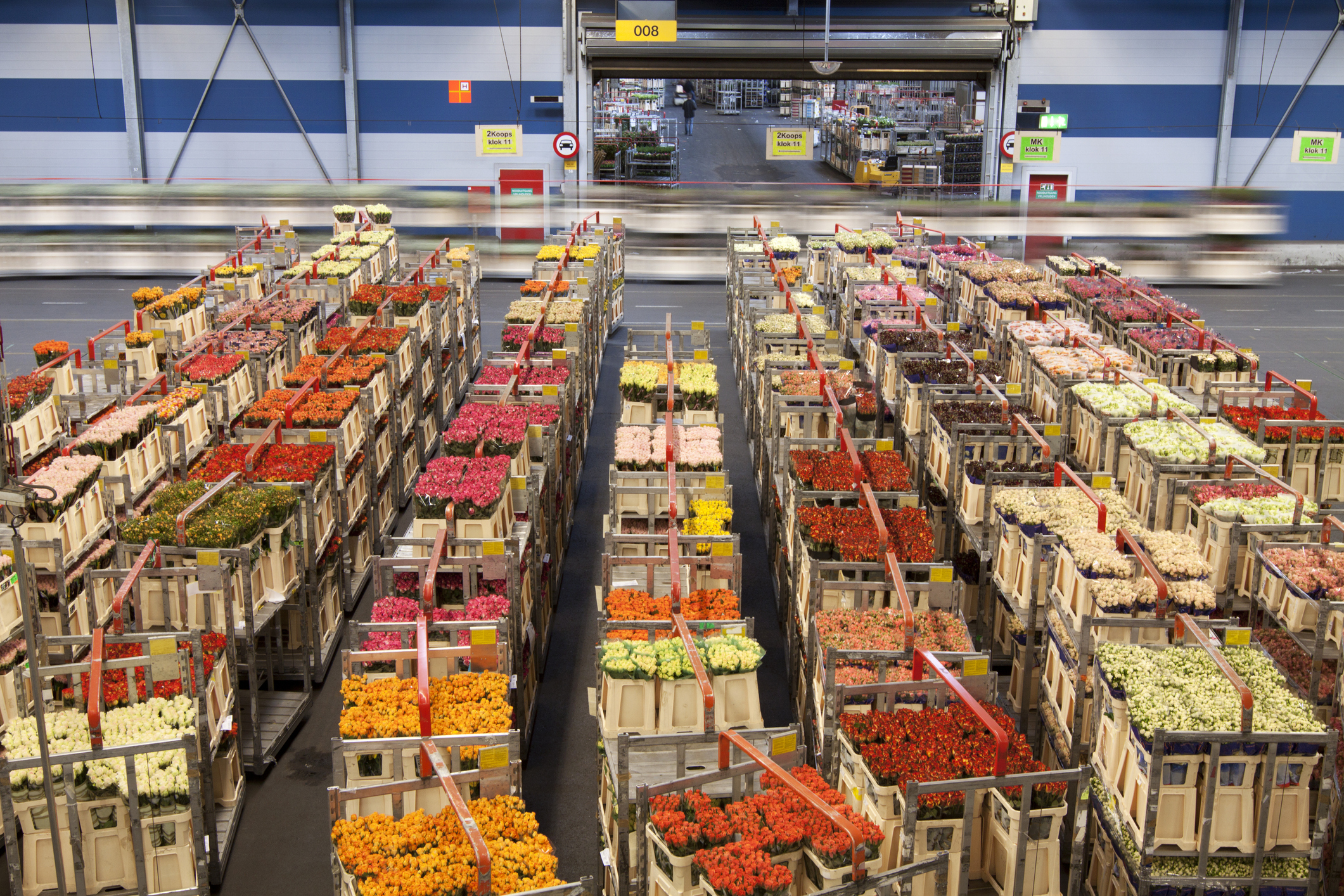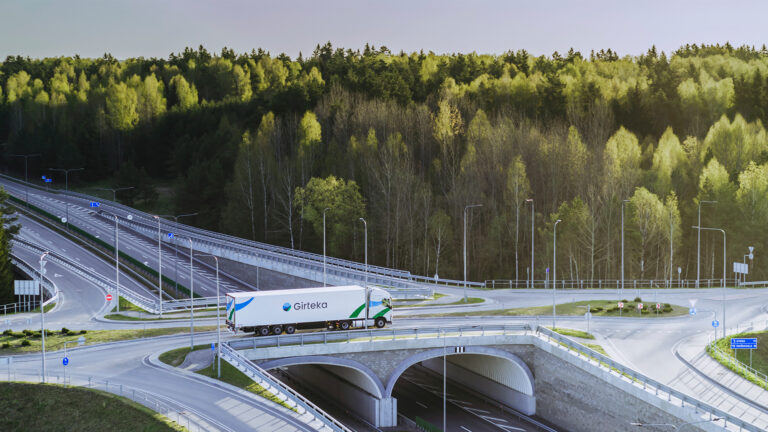Share it:
What do Easter, Mother’s Day, and Valentine’s Day have in common? In virtually every European country, the answer is simple — flowers. Rooted in tradition, flowers play a key role in gifting customs, personal milestones like weddings and birthdays, and everyday decoration. As a result, the EU flower market continues to thrive, and with estimated future growth from $19.06 billion in 2024 to $29.59 billion by 2032, its potential is undeniable [1].
The Netherlands dominates both the European and global flower markets, accounting for an impressive 40% of worldwide flower and plant exports [2]. Meanwhile, Germany – the biggest consumer of fresh flowers on the continent [3] – also plays a key role. In the face of global challenges, evolving business standards, and shifting consumer expectations, however, the position of leadership isn’t a one-and-done deal. Success favors those who can adapt and innovate without compromising on the one thing every consumer wants to see – fresh and healthy-looking flowers delivered just in time for their next occasion.
Market trends change, but priorities don’t
One of the biggest growth drivers in the European flower market today is e-commerce, whose influence grew by 22% in 2022 alone [4]. This shift has given consumers more control, allowing them to order flowers with fewer middlemen and, in some cases, receive them in less than 24 hours. Technological advancements, such as automated greenhouses and precision agriculture, are another major growth factor. Positioning the adoption of smart greenhouse technologies as an example, in 2023 flower farms in the Netherlands reported a 20% increase in productivity caused by this upgrade alone [5].
The rewards of innovation are not limited to efficiency alone: other possible benefits include reduced costs, better waste management, improved data sharing, more seamless compliance with local and EU regulations, and so on. That said, as flowers make their way from the supplier to the florist, agent, or consumer, carriers face the intricate task of balancing agility against the delicate nature of this cargo. For instance, cut flowers – a major segment representing 55,7% of total floriculture market share in 2023 [6] – must be handled more gently than the average fruit or vegetable. Even slight temperature changes, improper packaging, or a bumpy transfer from one transport vehicle to another can significantly damage the visual appearance of flowers and shorten their vase life. Together, these factors put the choice of a specialized, result-driven carrier at the top of every flower supplier’s priority list.
Returning to the specifics of flower distribution in Europe, another major factor that is unique to this niche is auctions. Mainly originating in the Netherlands, auctions hold a 30-40% market share in the EU [7]. The Royal FloraHolland auction holds the title of the world’s largest flower auction, generating over €4.5 billion in annual revenue [8]. Flower auctions are also a prime example of the transformative power of digitalization. Once limited to in-person bidding, today most major platforms offer seamless online access, making participation more efficient and globally inclusive. Establishing a virtual footprint in these marketplaces has proven to be a game-changing strategy for producers in developing countries as well, allowing them to compete on equal footing with European suppliers.
Handled with care – what does this mean to the carrier?
While auctions and digital platforms have transformed the process of flower distribution, the fundamental challenge of keeping flowers fresh throughout their journey remains. As cargo, flowers are highly unforgiving and sensitive to environmental conditions, with strict temperature and humidity requirements that vary depending on the type of flowers in question. Bulbs, for example, are more resilient but require a dry, cool environment to prevent disease spread. Cut flowers, on the other hand, demand near-freezing temperatures, and even the slightest fluctuation can accelerate wilting and shorten shelf life, in turn significantly impacting their market value [9].
This is where specialized cold chain logistics come into play. In flower transportation, success hinges on working with carriers that are agile, adaptive, and technology-driven. With operations spanning over 30 countries in Europe, carriers like Girteka provide the infrastructure to support time-sensitive flower deliveries, even at short notice (24-48 hours). An extensive fleet of over 9,200 trucks and 9,800 trailers ensures the flexibility to scale up capacity during peak seasons, while real-time temperature monitoring, real-time visibility solutions powered by AI, and data-driven route optimization enhance supply chain transparency. These capabilities allow flower suppliers to stay ahead of market fluctuations, ensuring that every delivery arrives fresh and on time.
After all, ensuring the right conditions during transport is not just a best practice – it’s a necessity. Failing to do so or experiencing disruptions can significantly increase the risk of wilting, early senescence (biological aging), and the appearance of gray mold (Botrytis cinerea) [10]. Alongside temperature management, gentle handling is just as critical. As one of the world’s leading logistics providers, DHL emphasizes the synergy between precise temperature control and careful handling protocols to protect delicate cargo like fresh flowers. Well-rehearsed processes and extensive employee training are crucial to ensuring that every shipment is handled with care and preserving quality from departure to delivery [11].
Dipping back into the potential of digital systems and AI, the impressive growth of the EU flower market isn’t just fueled by improvements on the suppliers’ end. By leveraging smart sensors and data analytics, carriers also play an important role in building customer trust and transparency in this dynamic market. Besides unlocking real-time monitoring of shipments’ temperature, location, and progress [12], these technologies enable proactive intervention, helping to address disruptions before they escalate. The prospect of integrating AI-driven insights is more than an opportunity to safeguard product quality – it’s the key to building more resilient and adaptive supply chains that will stand the test of time.
Ongoing challenges
Although significant improvements throughout the supply chain of flowers support consistency in product quality and delivery, seasonality (along with demand fluctuation) is and will always be at the core of this industry. The tradition of gifting flowers during holidays and special occasions makes up a significant portion of the personal use segment, which constituted 60.4% of the European floriculture market share in 2023 [13]. As the pressure to deliver on time rises especially high on those specific dates, adapting to demand fluctuations requires a logistics network that is both scalable and agile.
Another major challenge stems from shifting consumer expectations around sustainability. Modern consumers are becoming increasingly aware of the resources required to import flowers and bring them to market. The question is: is it worth it? The rising preference for locally grown and organic flowers, especially in markets like Germany and France [14], sends a clear message. At the same time, there is a growing need for transparency regarding sourcing practices and sustainability efforts across the entire supply chain, pushing businesses to develop yet in another direction. The Netherlands, a key player in the global flower market, is already leading the way: statistics show 80% of Dutch flower farms have adopted eco-friendly practices [15].
As the demand for flowers continues to grow, the success of innovation and efficiency largely relies upon manpower rather than replacing it. However, the 10% decline in available agricultural workers reported by the European Labour Authority in 2023 [16] has become a pressing concern. This labor shortage is not only increasing costs but also limiting the industry’s ability to meet peak-season demand. While automation offers a partial solution, it requires high initial investment – an expense that smaller businesses often struggle to justify.
Future prospects
As mentioned earlier, online sales present a massive opportunity for flower suppliers. E-commerce platforms facilitate sales directly to consumers, bypassing traditional intermediaries and increasing profit margins [17]. However, digitalization alone isn’t enough – its success hinges on equally efficient logistics and well-organized supply chains. At second glance though, this priorities list also hides a win-win opportunity: speedy delivery. Having fast and reliable transportation solutions in place not only provides a competitive edge but also directly supports the fundamental need to preserve the freshness of flowers.
In terms of sustainability opportunities, it is also crucial to address transportation. As the primary distinction between imported and locally grown flowers, transit accounts for a significant share of the supply chain’s CO2 emissions, making it a critical area for improvement. Within this niche, intermodal solutions that combine rail and road transport have proven effective in delivering temperature-sensitive cargo safely and on time. In the case of Girteka, a 35% increase in intermodal transport use in 2024 compared to 2023 – translating to more than 24,000 full truckloads – led to the elimination of over 23.6 million kg of CO₂ emissions in just one year. This clearly demonstrates that by integrating more sustainable transport methods, logistics providers can significantly reduce the carbon footprint of flower distribution without compromising efficiency or reliability [18].
Continuous digital transformation and automation stands out as another promising direction for growth. Rather than treating it as a one-and-done task, modern businesses are increasingly embracing new technologies and evolving with them. Digital solutions are especially effective for streamlining cultivation, packaging, and distribution processes, as well as ensuring stable transit conditions. For example, Royal FloraHolland grows its flowers in automated greenhouses, which utilize artificial intelligence (Al) to monitor soil conditions and optimize irrigation [19]. Digital solutions and AI are also unlocking a new level of transparency by allowing businesses to provide real-time tracking and status updates, which enhances the customer experience and aligns with the expectations of online shoppers.
Driven by the delicate nature of flowers, precision, adaptability, and sensitivity are the main factors of success – and growth – in this industry. The future of flower logistics lies in smart, sustainable, and responsive supply chains that seamlessly balance efficiency with environmental responsibility. As demand fluctuates, particularly around holidays like Valentine’s Day and Mother’s Day, suppliers must rely on scalable and agile logistics providers with specialized expertise in advanced cold chain solutions.



